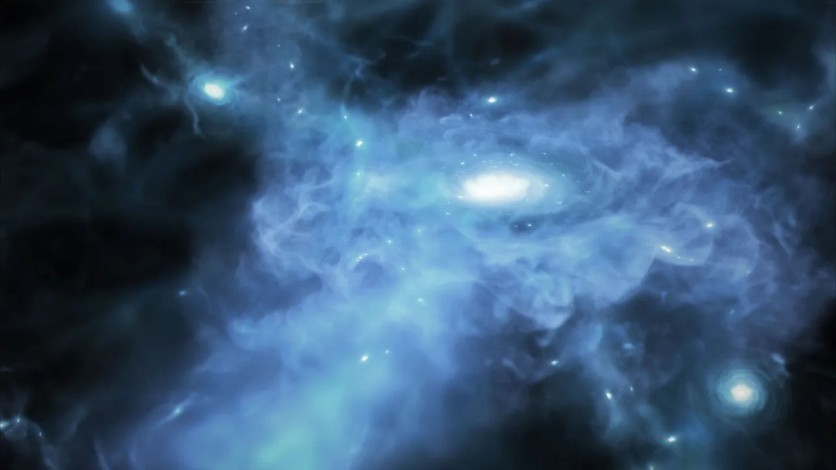Researchers studying data from NASA's James Webb Space Telescope observed three galaxies that appear to be actively forming when the universe was only 400 to 600 million years old.
These galaxies are enveloped in gas, primarily hydrogen and helium, which are the earliest elements to exist in the cosmos. Webb's highly sensitive instruments detected this dense gas surrounding the galaxies, suggesting it would fuel the creation of new stars.

Ancient Galaxies Are Like 'Sparkling Islands in a Sea of Neutral, Opaque Gas'
Kasper Heintz, an astrophysics professor at the Cosmic Dawn Center (DAWN) at the University of Copenhagen, described the ancient galaxies as "sparkling islands in a sea of neutral, opaque gas."
The sensitivity of James Webb's instruments allowed researchers to observe these early galaxies and gain insights into their formation, a previously unattainable feat. Simone Nielsen, a PhD student at DAWN, noted that these observations challenge the previous notion of galaxies as isolated systems.
At this early stage in the universe's history, galaxies are intricately linked to the intergalactic medium, consisting of filaments and pristine gas structures. This connection underscores the interconnected nature of galaxies and the surrounding medium during this formative period.
NASA said these early galaxies appear as faint red smudges in Webb's photos, making additional data crucial for the team's conclusions. These spectra show that light from these galaxies is being absorbed by huge amounts of neutral hydrogen gas.
Darach Watson, a professor at DAWN, noted that this widespread gas likely represents the initial assembly of neutral hydrogen into galaxies, which will eventually cool, clump, and generate new stars.
Read Also : NASA James Webb Space Telescope May Have Solved the Cosmic Mystery of an Inflated Exoplanet
Galaxies Full of Young Stars
The universe experienced major changes several hundred million years after the Big Bang, during a period known as the Era of Reionization. During this era, the space between stars and galaxies was predominantly opaque.
It wasn't until approximately one billion years post-Big Bang that this space transitioned to full transparency. According to NASA, the stars within galaxies played a pivotal role in this process by heating and ionizing the surrounding gas, gradually leading to its complete transparency.
By comparing Webb's data with models of star formation, researchers deduced that these galaxies largely consist of young stars. Watson noted that the presence of extensive gas reservoirs suggests that the galaxies have not yet had enough time to generate most of their stars.
Despite these findings, numerous questions persist. Researchers are eager to determine the precise locations of the gas within these galaxies, whether it congregates near their cores or resides in their peripheries.
They also seek to ascertain whether the gas is in a pristine state or already contains heavier elements. Heintz noted that the next phase involves constructing extensive statistical samples of galaxies to assess the prevalence and significance of these characteristics.
According to NASA, extensive research remains ahead as scientists continue to explore the enigmas of the early universe, utilizing the powerful infrared eyes of the James Webb Space Telescope. The findings of the research team were published in the journal Science.
Related Article : NASA James Webb Space Telescope May Have Found Atmosphere on 'Too Hot to be Habitable' Exoplanet

ⓒ 2025 TECHTIMES.com All rights reserved. Do not reproduce without permission.




